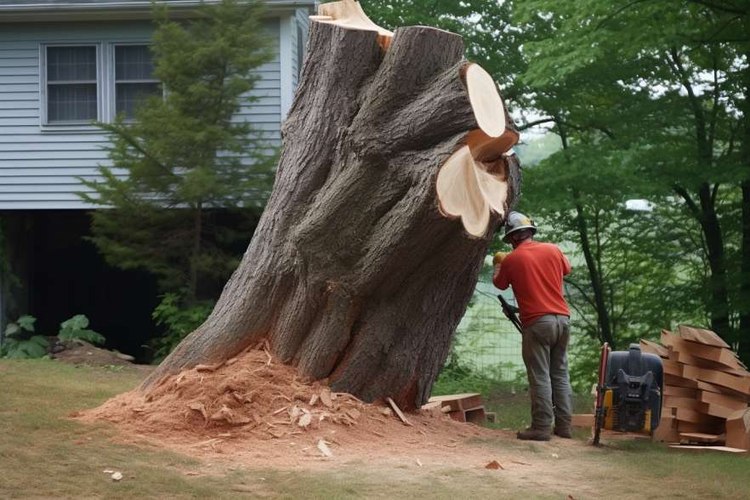What You Need to Know About Tree Cutting and Pruning Costs
Tree cutting and pruning are essential maintenance tasks for property owners with trees on their land. Whether you're dealing with overgrown branches, diseased limbs, or trees that need complete removal, understanding the costs involved helps you budget appropriately and avoid surprises. The price of tree services can vary significantly based on multiple factors, from the size and location of the tree to the complexity of the work required. This article breaks down the key elements that determine tree service pricing and what you should know before hiring professionals.

How is the average price of tree cutting and pruning calculated?
Tree service pricing follows a general formula that considers several variables, with tree size being the primary factor. Small trees (under 30 feet) typically cost less to prune or remove than medium trees (30-60 feet) or large trees (60+ feet). The diameter of the trunk also factors into pricing calculations, as thicker trees require more labor and equipment to handle safely.
Location plays a crucial role in determining costs as well. Trees positioned near structures, power lines, or in areas with limited access present more challenges and risks, resulting in higher prices. Urban areas generally have higher tree service rates than rural locations due to increased business costs and stricter regulations. Additionally, regional differences affect pricing—tree services in areas with higher costs of living typically charge more than those in regions with lower living expenses.
The condition of the tree also impacts pricing. Dead, diseased, or damaged trees often cost more to work with because they present additional hazards and may require specialized handling techniques.
What factors influence tree service costs most significantly?
Tree height ranks among the most influential cost factors. Taller trees require more time, labor, specialized equipment, and present greater risks. For example, a 20-foot ornamental tree might cost $250-$500 to remove, while an 80-foot oak could range from $1,000-$3,000 or more.
Equipment requirements significantly affect pricing as well. Simple pruning jobs may only need basic tools, while large tree removals could require bucket trucks, cranes, and specialized rigging equipment. Companies must factor equipment rental or maintenance costs into their pricing structure.
Safety requirements represent another major cost component. Proper tree work demands trained professionals, insurance coverage, and safety equipment. Reputable companies invest in worker training, liability insurance, and worker’s compensation coverage—all of which are reflected in their rates. Trees near power lines or structures require additional safety precautions and specialized techniques that increase costs.
The complexity of the job also influences pricing. Straightforward tree removals in open spaces cost less than those requiring sectional dismantling, specialized rigging, or intricate pruning techniques. Trees with multiple trunks or unusual growth patterns may require more time and expertise to handle properly.
What additional services might affect your total tree care costs?
Beyond basic cutting and pruning, many tree services offer additional options that affect your total investment. Stump removal typically costs extra, as it requires specialized equipment and additional time. Prices generally range from $100-$400 depending on stump size and accessibility.
Debris removal and disposal services add convenience but increase costs. While some companies include chip removal in their price, log removal, hauling, and disposal fees often represent separate line items. Alternatively, you might save money by handling debris yourself if you have the means to do so.
Emergency services for storm damage or hazardous situations typically command premium rates. After-hours work, weekend scheduling, or rapid response situations often incur surge pricing of 25-50% above standard rates due to overtime pay and the need to reschedule other clients.
Specialized treatments such as disease management, pest control, root fertilization, or cabling/bracing systems represent additional services with their own pricing structures that may be recommended depending on your tree’s condition.
What should you consider before hiring a tree service?
Proper credentials should top your checklist when evaluating tree service providers. Look for ISA (International Society of Arboriculture) certified arborists who have demonstrated knowledge and proficiency in tree care. Verify that companies carry adequate insurance coverage—both liability and worker’s compensation—by requesting certificates directly from their insurance provider.
Understanding the scope of work is essential for accurate cost comparison. Request detailed written estimates that specify exactly what services are included. Questions to ask include: Will they remove the stump? Who handles debris disposal? What clean-up is included? Are permits included in the quote?
Reputation and experience matter significantly in this industry. Research potential providers by checking online reviews, requesting references, and confirming their experience with your specific type of tree or service need. Companies with established local presence often provide more reliable service and stand behind their work.
Comparing tree service pricing across common services
Tree service pricing varies widely based on job type and tree specifications. The following table provides general pricing guidelines for common services:
| Service Type | Tree Size/Diameter | Average Cost Range | Factors Affecting Cost |
|---|---|---|---|
| Tree Removal | Small (up to 30 ft) | $250-$600 | Location, accessibility, complexity |
| Tree Removal | Medium (30-60 ft) | $600-$1,500 | Species, condition, obstacles nearby |
| Tree Removal | Large (60+ ft) | $1,500-$3,000+ | Equipment needed, risk factors |
| Tree Pruning | Small | $150-$400 | Number of cuts, height, accessibility |
| Tree Pruning | Medium | $400-$800 | Pruning technique required, tree health |
| Tree Pruning | Large | $800-$1,800+ | Complexity, specialized equipment needs |
| Stump Removal | Under 12” diameter | $100-$250 | Grinding depth, root system extent |
| Stump Removal | Over 24” diameter | $250-$500 | Wood hardness, accessibility |
| Emergency Services | Any size | 25-50% premium | Urgency, risk level, time of occurrence |
Prices, rates, or cost estimates mentioned in this article are based on the latest available information but may change over time. Independent research is advised before making financial decisions.
How can you ensure value when hiring tree services?
Obtaining multiple estimates is crucial for ensuring competitive pricing. Contact at least three reputable companies for detailed quotes, but be wary of estimates significantly lower than others—these may indicate inadequate insurance coverage or inexperienced crews. Compare not just the bottom line but the specific services included in each quote.
Timing your tree work strategically can lead to cost savings. Many companies offer discounts during their slow season (typically winter in most regions) when demand is lower. Planning non-emergency work during these periods may result in better rates. Some companies also offer discounts for multiple services performed at once.
Consider long-term tree health when making decisions. The cheapest option isn’t always the most economical in the long run. Proper pruning techniques by qualified arborists may cost more initially but promote healthier trees with fewer problems—and expenses—in the future.
Clear communication about expectations and limitations helps prevent misunderstandings. Before work begins, ensure you have a written agreement detailing the scope of work, timeline, payment terms, and any guarantees or warranties offered on the services provided.




